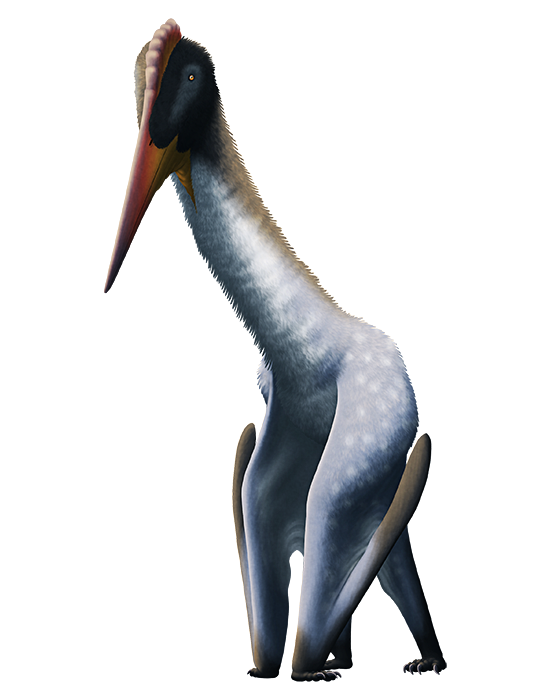Fragmentary fossils of huge azhdarchid pterosaurs have been found in Canada since the early 1970s, and for a long time they were assumed to belong to Quetzalcoatlus. But more recently these remains were re-examined and shown to actually represent an entirely new genus and species.
Cryodrakon boreas – an excellent name meaning “icy dragon of the north wind” – was officially described in late 2019. With a wingspan of around 10m (32’10”) it was similar in size to its close relative Quetzalcoatlus, but it dates to about 10 million years earlier making it one of the oldest azhdarchids ever found in North America.
It lived about 76 million years ago in Alberta, with its fossils coming from the Dinosaur Park Formation, an area that at the time would have been a coastal plain near the northern parts of the Western Interior Seaway. Despite Alberta being located somewhat closer to the Arctic Circle than it is today, the climate was warm-temperate and temperatures rarely dipped below freezing, with short nights in the summers and only a few hours of daylight in the winters.
Like other azhdarchids Cryodrakon would have spent a lot of its time on all fours on the ground. While moving like that it would have been almost 5m tall (16’5″), similar in size to a modern giraffe, stalking smaller animals and eating whatever it could catch and fit into its mouth.

